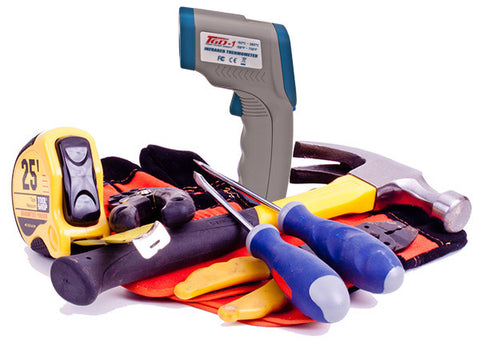
Take Accurate Temperatures
With Our Non-Contact Infrared Thermometers
The major advantage of non contact infrared thermometers is the ability to measure the temperature of hot, hazardous, or hard-to-reach objects safely without contact from comparatively large distances. What temperatures do infrared thermometers measure? Infrared thermometers work by sensing heat energy radiated from an object’s surface. The best infrared thermometer for most applications is a non-contact infrared thermometer with laser targeting (i.e., laser aiming) employing one or more lasers.
Non contact infrared thermometers offer unparalleled versatility for measuring the temperature of just about any material. By contrast, contact thermometers require thermal contact between the thermometer probe and the material being measured, which can be difficult (if not impossible) for many materials. Contact thermometers require time (perhaps 10s of seconds) to reach a final temperature whereas the temperature reading from an IR thermometer is practically instantaneous.
Select an IR thermometer based on the object’s temperature range you need to measure and the approximate distance the object is from the IR gun. For example a “distance to spot size ratio” (or D:S ratio) defines the area measured by the IR gun. For example, a D:S ratio of 10:1 means if you are measuring an object’s temperature from a distance 10-inches away, the IR gun will be measuring temperature over a “measurement circle” of about 1-inch in diameter. Likewise, if you are 10-feet from an object, the IR gun will measure temperature over a circle about 1-foot in diameter. There is no measurement distance limitation, but the object’s size must always be slightly larger than the “measurement circle”.
Our best non contact infrared thermometer is the Model TGD-2 with laser targeting featuring a dual-laser that accurately defines the diameter of the exact measurement circle at any given distance. The Model TGD-2 model also provides for adjustable emissivity for measuring a variety of material surfaces. Single-laser units only define the center of the measurement circle, but provide no indication of the area being measured.





